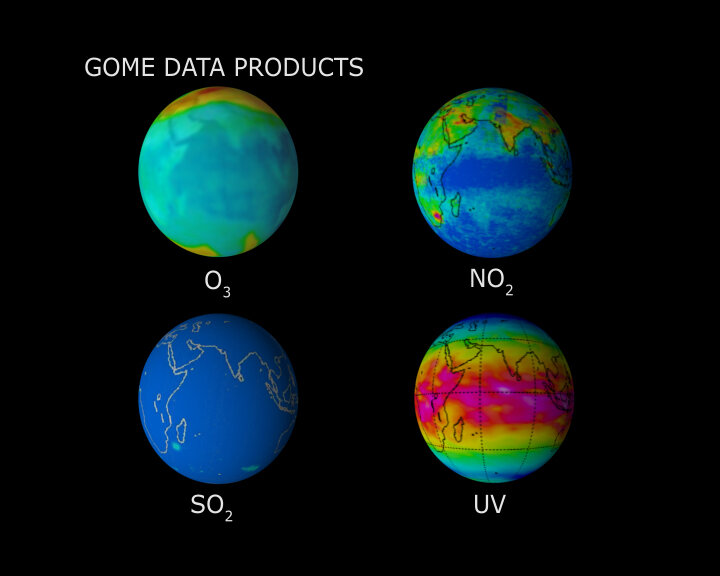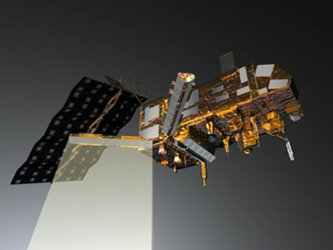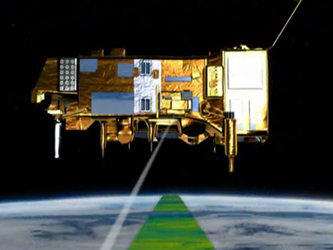Monitoring ozone with GOME-2
In the second of a series of short articles looking at the new European instruments carried on MetOp, we focus on the GOME-2 (Global Ozone Monitoring Experiment-2) instrument.
GOME-2 is a new generation instrument to map concentrations of atmospheric ozone and other trace gases for use in weather forecasting, air-quality monitoring and atmospheric research.
The stratospheric ozone layer acts as a shield, blocking harmful ultraviolet (UV) radiation from reaching the surface. However, the annual ozone hole over Antarctica illustrates how fragile our atmosphere is. For instance, chlorofluorocarbons (CFCs), once used as coolants and propellants emitted by spray cans and discarded refrigerators, ended up high in the stratosphere where they react with UV radiation to release free chlorine. The chlorine, in turn, causes ozone (O3) to break down into simple oxygen, which does not filter out the Sun's ultraviolet rays. Other similar processes are caused by so-called ozone-depleting substances. The depletion is accelerated by particular meteorological conditions such as low stratospheric temperatures, and hence its annual cycle. Excess exposure to UV-B is linked to skin cancer, cataracts and other damage in humans, animals and plant life.

With monitoring the Earth's atmosphere an international priority and growing concerns about exposure to high levels of ultraviolet radiation, the enhanced GOME-2 instrument is set to continue the long-term monitoring of atmospheric ozone started by GOME on ERS-2 and SCIAMACHY on Envisat. GOME-2 will ensure that the future monitoring of atmospheric ozone is fast and accurate, contributing greatly to atmospheric chemistry research and climate monitoring. Observations of levels of other gases such as nitrogen dioxide and sulphur dioxide will be used for the monitoring and forecasting of air quality while recorded levels of ozone will be used for warnings and UV forecasting. Of course, the meteorological services will further be using GOME-2 data in their numerical models, in order to contribute to their weather forecasts.

GOME-2 is a scanning spectrometer that captures light reflected from the Earth's surface and atmosphere. As solar radiation reaches the Earth's atmosphere and surface a certain percentage is reflected or backscattered out to space. The degree to which incident light is backscattered depends on the albedo of the surface the light encounters, for example, clouds in the atmosphere have a high albedo so a large proportion of sunlight is reflected back. GOME-2 is able to determine amounts of certain gases present in the atmosphere through the principles of spectroscopy; where the incoming light is split into its spectral components by a complex set of telescopes, prisms and gratings to reveal absorption lines, which correspond to the various gases present in the observed sample.
MetOp is currently undergoing final preparations in Baikonur, Kazakhstan for launch on 17 July 2006.
MetOp's European instruments:
ASCAT (Advanced Scatterometer) to measure wind speed and direction over the ocean.
GOME-2 (Global Ozone Monitoring Experiment-2) to measure concentrations of atmospheric ozone and other gases.
GRAS (Global Navigation Satellite System Receiver for Atmospheric Sounding) to measure atmospheric temperature and humidity.
IASI (Infrared Atmospheric Sounding Interferometer) to measure atmospheric temperature and moisture, and trace gases such as carbon monoxide, nitrogen oxides, methane, ozone.
MHS (Microwave Humidity Sounder) to measure atmospheric humidity and temperature.








